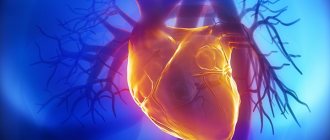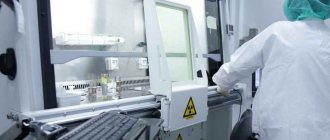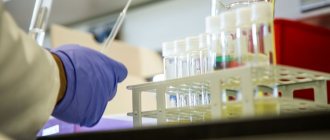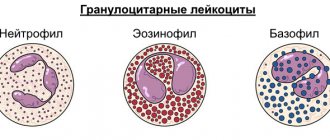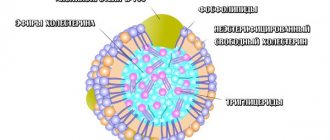The body is a unified and well-functioning system, any changes in which cause disturbances in its functioning. So, if there is a failure in the process of destruction of body acids or alkalis, then the electrolyte composition of the blood changes. This is due to the fact that positively and negatively charged particles of decomposition products are formed precisely at the moment of splitting of the substances mentioned. And changes in the balance of electrolytes lead to disruption of many internal processes. Therefore, it is important to monitor your health and take a blood test for electrolytes on time.
What are electrolytes
First of all, it should be noted that in the human body electrolytes are represented by two types of discharged particles:
- positively charged cations;
- negatively charged anions.
The first are formed by phosphate, bicarbonate and chloride compounds with the participation of organic acids. Particles with a positive charge are compounds of magnesium, calcium, sodium and potassium.
Blood plasma electrolytes make up no more than one percent of the total plasma content, but this is enough to have a major impact on health.
The location, quantitative and qualitative composition of anions and cations is involved in regulating the permeability of the cell membrane shell, in the transport of substances for nutrition and processed products.
What are electrolytes needed for?
These particles can be found both inside cells and in the intercellular space. They perform a number of important functions that ensure the normal functioning of the body:
- determine the rate of blood clotting;
- participate in the conductivity of cellular excitability;
- influence thrombus formation;
- participate in the transport of water molecules from the blood to the tissues, thereby regulating the acidity level of the biological fluid;
- with their help, nerve impulses are transmitted.
In addition, in addition to the general effect on the body, it can be noted that each element included in the electrolyte has a significant impact on various processes. But the most important are positively charged potassium and sodium ions, negatively charged chlorine.
Chlorine
About 90% of all chlorine is contained in the space outside the cells and ensures that they have no charge. The content of this element is proportional to the number of sodium ions. It is involved in normalizing the functioning of the digestive system and liver.
The intake of substances important for the body occurs through food intake, and the remains are removed through the kidneys.
In addition to the three main elements, there are others that are no less important. For example, magnesium is involved in maintaining adequate heart function and in the formation of bone tissue. Calcium regulates the metabolic process and builds the skeleton and ensures coagulation. Therefore, the composition of decomposition products must be periodically checked by taking a blood test for electrolytes. As you can see, they play an important role in the functioning of the whole organism.
Sodium
This element is necessary for the proper functioning of the heart, blood vessels and maintaining normal water concentrations inside and outside cells. Sodium is involved in the functioning of the nervous and muscular systems.
Sodium concentration is measured in diseases of the kidneys, liver, diabetes mellitus, pathologies of the gastrointestinal tract and infectious diseases.
Signs of sodium deficiency are fatigue, weakness, frequent urination, decreased blood pressure, pain in the heart, difficulty breathing.
Signs of increased concentration are thirst, dry mouth, dry skin, muscle twitching, increased blood pressure, headache, nausea, memory impairment.
Sodium norm – 136-145 mmol/l
If there is a lack of this electrolyte, the patient is given special solutions to compensate for its loss. You can increase the amount of the incoming element using products containing large amounts of this substance. The daily sodium intake is 2000-4000 mg (2-4 g).
Sodium content per 100 g of products
| Product | |
| Salted herring | 4,8 |
| Raw smoked sausage | 2,7-2,8 |
| Semi-smoked sausage | 1,6 |
| Boiled sausage | 1,04 |
| Pickled cheese | 1,6 |
| Hard cheeses | 0,96-0,98 |
| Semi-hard cheeses | 0,85-0,88 |
| Sausages | 0,86 |
| Sauerkraut | 0,80 |
| Canned vegetables | 0,75-0,79 |
| Canned fish | 0,65 |
| Rye bread | 0,60 |
| Wheat bread | 0,50 |
| Beans | 0,40 |
| Seafood | 0,12-0,28 |
What is the purpose of analyzing blood gases and electrolytes?
The concentration of breakdown products may change in the presence of any disease. A blood test for electrolytes is prescribed if it is necessary to monitor the functioning of the kidneys and heart, if there is a suspicion of an imbalance in metabolism. In some cases, studies are necessary to determine the effectiveness of the prescribed treatment.
However, the pathologies that occur in humans are very diverse and electrolyte concentration cannot always help, therefore such an analysis is prescribed only for certain indications:
- the pathology associated with the presence of nausea, dizziness and behavioral abnormalities has not been established;
- increased heart rate, of various locations and origins;
- arterial hypertension in order to identify the best treatment methods;
- pathology of the excretory system in order to identify diseases of the liver and pancreas.
As a rule, deviations from the norm in blood electrolytes are found among several elements, both upward and downward. And if such anomalies are detected in only one, then a repeat study is prescribed.
How to prepare for analysis
First, you need to get an appointment from your doctor for a blood test for electrolytes. This type of study requires blood from a vein. The collection takes place in the morning. In order for the concentration of electrolytes in a biochemical blood test to be reliable, you should properly prepare for the procedure. As part of this, the following rules must be followed:
- Blood sampling should be carried out 8-12 hours after the last meal.
- You should avoid all drinks, with the exception of regular still water.
- Do not smoke for 2 hours before starting the procedure.
- Avoid intense physical activity 24 hours before the test.
If you are taking medications at the time of the study, you should notify your doctor about this.
For children under five years of age, there is a special rule: half an hour before the procedure, you need to drink water in small portions.
Methods for determining the amount of cations and anions
There are a number of methods that can determine the amount of electrolytes:
- Atomic spectral. It consists in the fact that samples in a liquid state of aggregation are converted into “atomic vapor” by heating (in this case, a temperature regime of more than 1000 degrees is used). Then, through spectral research, the qualitative and quantitative composition of the samples is determined.
- Weight. This method involves studying the biomaterial after its interaction with added enzymes, which results in the formation of a precipitate. Having separated and weighed it, they find out what the blood test for electrolytes showed. The next step is to determine the mass of each individual component.
- Photoelectrocolorimetry. It consists of achieving a reaction of the test sample with a solution, resulting in a certain color. It is its saturation that determines the number of particles.
- Using a specialized device - an electrolyte analyzer, the water balance is determined. The use of this device allows you to determine the exact amount of potassium, sodium and calcium ions, as well as the acidity of the blood plasma.
In adults
When deciphering, the doctor focuses on a specially designed table. The result of the study, as a rule, does not depend on gender and is identical in males and females. The amount of electrolytes is measured in mmol/l.
So, the norm of phosphorus content for men is 1.87-1.45, for women - 0.9-1.32; iron 17.9-22.5 and 14.3-17.9, respectively. The content of the remaining elements is the same for both. Calcium – 3.4-5.5; sodium – 135-136; magnesium – 0.64-1.05 and chlorine – 98-106.
In addition to the existence of norms, it should be remembered that every person has different physiological characteristics and general health, so the conclusion is made by a specialist individually for each person.
The role of sodium
Sodium is necessary for the growth of the body, the prevention of sun or heat stroke, the functioning of peripheral nerve trunks and muscles, and the maintenance of other electrolytes in a dissolved state.
Comes with food. The richest in content: table salt, seafood, beets, carrots, kidney meat, veal.
Normal sodium content does not depend on age and gender: from 136 to 145 mmol/l.
An increase in sodium occurs when:
- pathologies of the adrenal cortex, hypothalamus;
- excessive intake of salty foods;
- treatment with anabolic steroids, androgens, estrogens;
- taking contraceptives.
We advise you to read: Factors affecting blood composition
Sodium deficiency occurs when:
- eating unsalted food;
- loss of fluid through sweat, vomiting, diarrhea;
- high temperature;
- taking a large dose of diuretics;
- adrenal insufficiency;
- diabetes mellitus;
- heart and kidney failure;
- liver cirrhosis.
In children
The standards regarding the concentration of sodium, magnesium, calcium and chloride ions coincide with the indications for adults. The concentration of potassium and iron is proportional to age, while the phosphorus content does not depend on it.
For children, the norm is 7-18 µmol/l of iron and 4.1-5.3 mmol/l of potassium before 1 year of age, and 9-22 µmol/l and 3.5-5.5 mmol/l, respectively, after one year. Phosphorus content for children of all ages – 1.10-2.78 mmol/l
A timely analysis of the electrolyte content will help identify abnormalities, if any, and get rid of the pathology.
Indications
A doctor may prescribe a test for potassium in the blood if there are clinical manifestations of an imbalance of this element.
Symptoms of increase
The manifestations of hyperkalemia are quite varied; a high level of this microelement affects the activity of the nervous and muscular systems, the functions of the lungs, kidneys and heart muscle. The main symptoms of hyperkalemia, that is, a condition in which there is an increased level of potassium in the body:
- muscle weakness;
- paralysis and paresthesia;
- feeling of anxiety;
- a decrease in the amount of urine excreted per day, the appearance of protein compounds and blood in the urine;
- cardiac arrhythmias;
- breathing disorders.
Low level symptoms
If the potassium level is significantly reduced, a condition called hypokalemia develops. It is manifested by the following symptoms:
- weakness, fatigue, trembling hands;
- the appearance of a heart murmur, a decrease in the frequency of contractions;
- the appearance of shortness of breath, moist rales in the lungs;
- disruption of the gastrointestinal tract (flatulence, vomiting);
- copious urine output;
- the appearance of glucose intolerance.
Causes of imbalance
The detection of any discrepancy with the norm when deciphering a hemotest for a blood test for electrolytes, no matter whether it is increasing or decreasing, can be considered a bad result that has a negative impact on the condition of the body. At the same time, the reasons for the increase in the concentration of elements differ from the factors for the decrease.
Thus, a deviation in the interpretation of electrolytes in a blood test indicates pathologies:
How to determine which element is outside the norm
It is possible to determine which element is outside the normal range not only using a biochemical blood test of electrolytes, but also by the symptoms that appear when the correct concentration is violated.
So, the following signs indicate an excess of chemical elements:
Just like excess, lack of electrolytes has a strong impact on the body and leads to unpleasant consequences for humans. Often, a reduced ion concentration indicates dehydration and leads to weakness and decreased performance.
In addition, you can determine which element is deficient thanks to indirect symptoms:
One of the main reasons for a decrease in electrolyte levels is the development of diseases of the gastrointestinal tract, intense physical activity and poor diet.
Decoding the research results
Electrolyte imbalances most often occur in people who have illnesses or poor diets.
Due to an incorrectly formulated diet, the amount of electrolytic compounds entering the blood plasma may pathologically decrease or, on the contrary, increase.
Young and elderly patients are very sensitive to such disorders, since their compensatory mechanisms have either not yet developed well enough, or, on the contrary, do not work well due to age.
Reduced levels of electrolytes in the blood
A decrease in the amount of each electrolyte is characterized by separate pathologies.
A decrease in potassium levels indicates:
- excessive physical activity;
- stress and nervous tension;
- alcoholism;
- abuse of coffee drinks and sweets;
- dyspepsia;
- unbalanced diet;
- cystic fibrosis;
- hyperhidrosis.
The main symptoms of hypokalemia are shortness of breath, irregular heart rhythm, heart pain, impaired reflexes and convulsions, general malaise, and exhaustion.
Hyponatremia usually develops with the following disorders:
- cirrhosis;
- insufficient salt intake;
- dehydration;
- persistent increase in body temperature;
- lack of thyroid hormones;
- heart and kidney diseases;
- hyperglycemia;
- nephrotic syndrome.
With this disorder, patients suffer from hypotension, psychoemotional disorders, loss of appetite, vomiting and nausea.
The main reasons for reducing the amount of chlorine electrolytes:
- increased sweating;
- acidotic coma;
- traumatic brain injury;
- disorders in the gastrointestinal tract.
With hypochloremia, people actively lose hair and their teeth deteriorate.
The following pathologies can be the causes of hypocalcemia:
- fragility and inhibition of bone growth;
- hypothyroidism;
- pathology of the pancreas;
- bile stagnation;
- renal dysfunction and liver disorders;
- severe exhaustion of the body;
- abuse of antiepileptic drugs and cytostatics.
Hypoconcentration of phosphorus, iron and magnesium most often appears due to:
| Magnesium | Phosphorus | Iron |
|
|
|
Note! The main reason for the decrease in the concentration of all electrolytes is the uncontrolled use of diuretics and an unbalanced diet.
Increased levels of electrolytes in the blood
Hyperconcentration develops against the background of the following phenomena:
| Hyperkalemia | Hypernatremia | Hyperchloremia | Hypercalcemia | Hypermagnesemia | Elevated iron levels | Hyperphosphatemia |
| starvation; | oversaturation with salt; | alkalosis; | lack of parathyroid hormones; | lack of thyroid hormones; | lead poisoning; | hormone and chemotherapy; |
| disturbance of nerve conduction; | hormone therapy; | dehydration; | bone cancer; | dehydration; | anemia of various nature; | therapy with diuretics and antiseptics; |
| erythrocyte hemolysis; | tumors in the adrenal glands; | excess adrenal hormones; | poisoning with thyroid hormones; | abuse of drugs with magnesium; | violation of hemoglobin synthesis; | renal pathologies; |
| dehydration; | camatoses; | lack of vasopressin. | spinal tuberculosis; | diseases of the kidneys and adrenal glands. | blood diseases; | tumor growth and metastasis; |
| hyperacidity; | pituitary hyperplasia; | gout; | hemochromatosis. | increased lipid concentration; | ||
| adrenal diseases; | disorders in the endocrine system. | excess vitamin D and insulin. | diabetic ketoacidosis; | |||
| excess potassium; | lack of thyroid parahormones; | |||||
| long-term therapy with non-steroidal anti-inflammatory drugs and cytostatics. | excess growth hormone; |
Consequences of violations of the quantitative composition of electrolytes
Since an in vitro blood test for electrolytes can reveal both increased and decreased levels of electrolytes, the consequences must be considered in two cases.
If hyperhydration occurs, that is, the fluid content is increased, then it accumulates inside the cells and in the space between them, and therefore the cells swell. In the case of cells of the nervous system, this causes excitation of the nerve centers and the occurrence of seizures.
If the opposite phenomenon is observed - dehydration, then blood thickening is observed, which leads to the formation of blood clots and disruption of normal blood circulation. At the same time, a person loses a lot of weight, the skin dries out, wrinkles form, and the heartbeat rhythm is disturbed.
Magnesium
Magnesium is the second most abundant intracellular microelement after potassium. 60% of it is in bone tissue, the rest is mainly in intracellular fluid. 75% of magnesium in serum is in ionized form, the rest is in connection with albumins and globulins.
The main function of magnesium is participation in neuromuscular conduction, regulation of vascular wall tone, protein synthesis, it is a natural anticoagulant and is part of enzymes. Magnesium is excreted in the urine. Physiologically, this microelement is a calcium antagonist, so with rickets, magnesium in the child’s blood may be increased.
Magnesium norm:
A decrease in magnesium content below normal is called hypomagnesemia, and an increase is called hypermagnesemia.
Reasons for decreased magnesium:
- Poor nutrition, malabsorption;
- Prolonged diarrhea;
- Alcoholism;
- Taking diuretics, aminoglycosides;
- Diabetes.
False hypomagnesemia is observed during stress, acute infections, and hypovolemia.
Symptoms of hypomagnesemia are caused by concomitant hypokalemia and hypocalcemia and include neurological disorders (tremor, drowsiness, involuntary muscle contractions, convulsions, nystagmus, ataxia), ECG changes (prolongation of PQ and QT intervals). It is quite difficult to diagnose a deficiency or excess of magnesium in the body, because it weakly correlates with the concentration of this microelement in the blood serum.
Magnesium is increased in the blood when:
- Kidney failure;
- Hypothyroidism;
- Hepatitis;
- Neoplasms;
- Taking lithium.
Symptoms of increased magnesium are areflexia, drowsiness, weakness, respiratory failure, paralysis, bradycardia, decreased pressure, on the ECG - prolongation of the PQ, QRS and QT intervals, complete atrioventricular block and asystole.
How to bring particle levels back to normal
To restore the balance of electrolytes in the blood, you must follow a number of rules:
- Properly organized nutrition will help restore normal levels of water-salt balance.
- Drinking plenty of fluids and unsalted foods will help prevent excess sodium from accumulating.
- The same measures will help get rid of excess magnesium.
- You can also lower your calcium levels by eating foods that contain a lot of fiber.
- During physical activity, to restore fluid losses, you should drink a lot.
- Products included in the diet must include all the necessary microelements.
By following these simple rules and taking a blood test for electrolytes on time, you can protect yourself and your health from the occurrence and development of various pathologies, and ensure a long life.
Sodium
Sodium is the main extracellular cation, an element that helps the body actively grow and develop. It ensures the transport of nutrients to the cells of the body, participates in the generation of nerve impulses, has an antispasmodic effect, activates digestive enzymes and regulates metabolic processes.
The norm of sodium in the blood for adults is 135 – 150 mmol/l. (For children – 130 – 145 mmol/l).
Sodium leaves the body through sweating. People constantly need it, especially those who experience severe physical activity. You need to constantly replenish your sodium supply. The daily sodium intake is about 550 mg. Plant and animal sources of sodium: table salt, cereals, soy sauce, vegetables, beans, organ meats, seafood, milk, eggs, pickles, sauerkraut.
When the amount of sodium cations in the blood changes, the functioning of the kidneys, nervous system, and blood circulation is disrupted.
A blood test for sodium electrolytes is carried out for gastrointestinal dysfunction, diseases of the excretory system, and endocrine pathologies.
Hypernatremia (increased levels of the element in the blood) develops when:
- Excess salt in the diet,
- Long-term hormone therapy
- Pituitary hyperplasia,
- Adrenal tumors,
- Comatose state
- Endocrinopathies.
The causes of hyponatremia are:
- Refusal of salty foods,
- Dehydration resulting from repeated vomiting or prolonged diarrhea
- Hyperthermia,
- Loading doses of diuretics,
- Hyperglycemia,
- Hyperhidrosis,
- Prolonged shortness of breath
- Hypothyroidism,
- nephrotic syndrome,
- Heart and kidney diseases,
- Polyuria,
- Cirrhosis of the liver.
Hyponatremia is manifested by nausea, vomiting, decreased appetite, palpitations, hypotension, and mental disorders.

